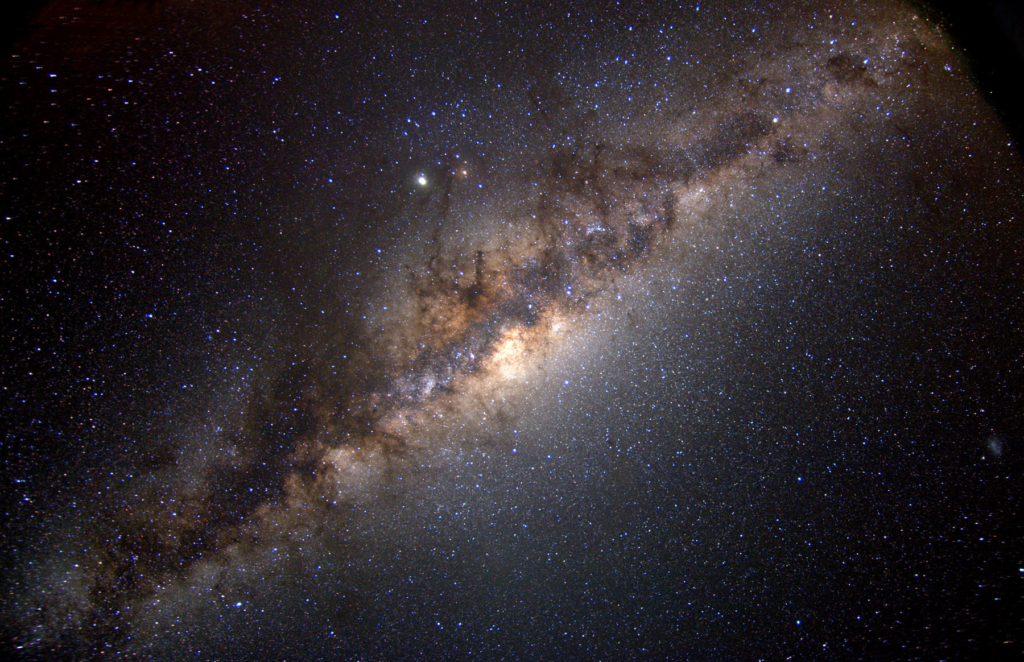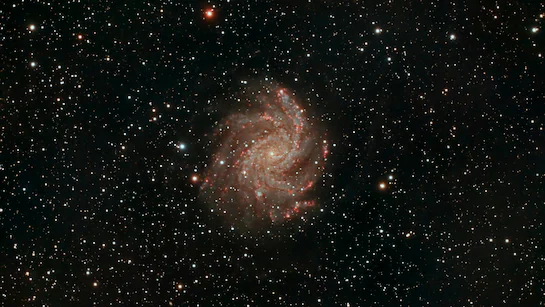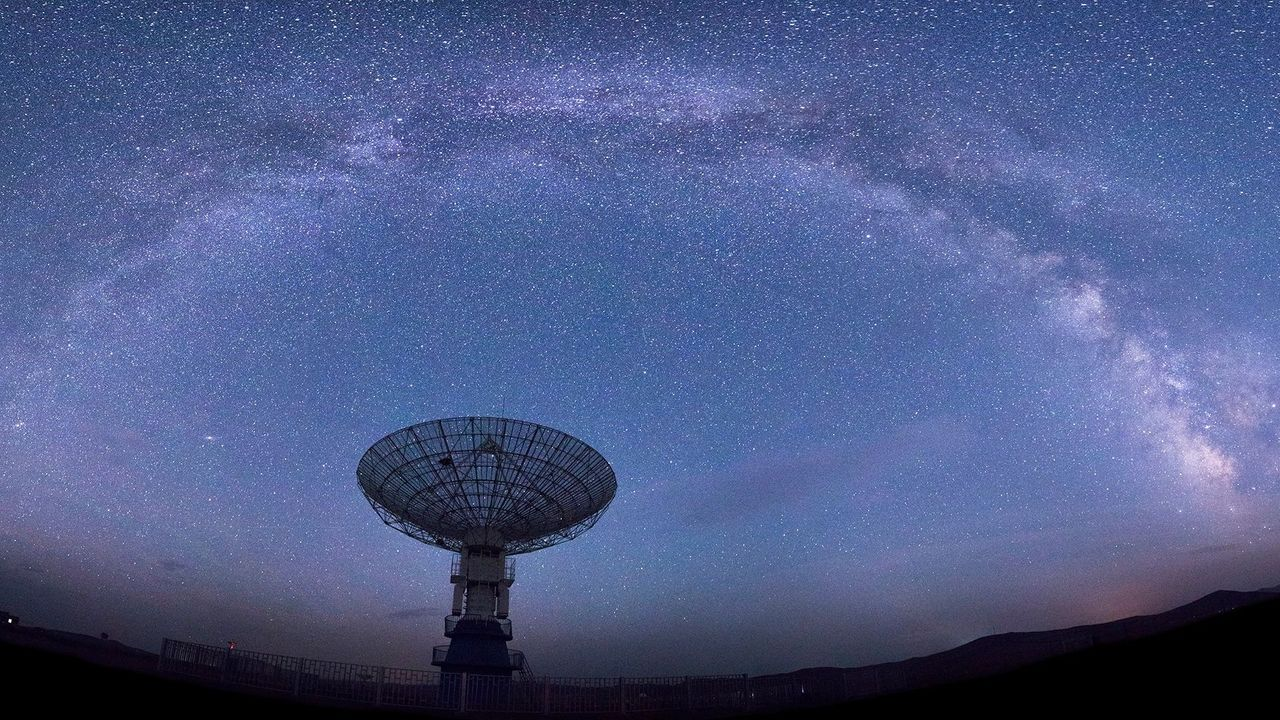The universe continues to surprise us with its vastness and complexity. A recent discovery by astronomers has unveiled what is being called the largest-known structure in the cosmos: ‘Quipu.’ Named after an ancient Incan measuring system, this colossal superstructure spans an astonishing 1.3 billion light-years across, making it over 13,000 times the length of the Milky Way.
This revelation not only challenges our understanding of cosmic structures but also has profound implications for astrophysics and cosmology. Scientists believe that studying Quipu and similar structures can help refine our understanding of the universe’s large-scale formation and evolution.
What is Quipu? The Newly Discovered Superstructure
Quipu is a vast cosmic entity composed of galaxy clusters, groups, and individual galaxies. It was discovered through a detailed analysis of astronomical data and is part of a larger group of five massive superclusters that together contain nearly 45% of all galaxy clusters, 30% of galaxies, and 25% of the matter in the observable universe. This discovery was published on the preprint website ArXiv and is awaiting peer review.
The name ‘Quipu’ was chosen to reflect the Incan counting and record-keeping system, which used a network of knotted strings to store numerical data. This is fitting, given the superstructure’s intricate and interconnected nature, resembling cosmic threads woven across billions of light-years.
Superclusters like Quipu are among the largest structures in the universe, yet they differ from gravitationally bound systems such as galaxies or galaxy clusters.
Read : Is there life beyond Earth?: Are we alone in the universe?
Instead, they are large-scale cosmic formations where galaxies and galaxy clusters are loosely connected by cosmic filaments, forming an enormous web-like structure. Unlike smaller gravitationally bound systems, superclusters will eventually break apart due to the universe’s ongoing expansion.
How Quipu Compares to Other Large Structures
Quipu is not the first massive cosmic structure to be discovered. Previously, the largest known contender was the Hercules-Corona Borealis Great Wall, which spans approximately 10 billion light-years. However, the existence of this structure remains disputed, as some researchers argue it may be an illusion created by observational biases.
In contrast, Quipu’s existence appears more robust, as it is a clearly visible structure even when simply mapping galaxy clusters in the target redshift range. According to astronomers, Quipu plays a significant role in the large-scale gravitational interactions of the universe.
Read : Khadija Omar Becomes First Woman to Wear Hijab on Miss Universe Stage
Specifically, it is believed to contribute to the peculiar motion of the Local Group, the galaxy group that includes the Milky Way, with respect to the Cosmic Microwave Background (CMB) frame.
Unlike structures like the Laniakea Supercluster, which houses the Milky Way and is considered a ‘local’ supercluster, Quipu is far larger and more massive. The presence of such enormous structures challenges some aspects of the current cosmological model, particularly regarding how matter distributes itself at the largest scales.
Implications for Cosmology and the Evolution of the Universe
The discovery of Quipu has profound implications for cosmology. Understanding how such a massive structure formed and how it influences its surroundings can help refine models of the universe’s evolution.
The presence of these superstructures affects cosmic flows—the movement of galaxies and clusters—potentially altering key measurements related to the Hubble constant and dark energy.

One of the key findings from this study is that Quipu, along with the other four newly identified superstructures, is a transient configuration. This means that while they currently exist as enormous, interconnected formations, they are not gravitationally bound and will eventually fragment into smaller units due to cosmic expansion.
This is a crucial insight because it suggests that what we observe today may not be the final state of these structures. Instead, they are snapshots of a dynamic and evolving universe.
Furthermore, understanding Quipu’s gravitational influence can help astronomers determine how local structures, including the Milky Way, move within the cosmic web.
Since the study indicates that Quipu plays a role in the peculiar motion of the Local Group, further research could uncover more about the forces shaping our galactic neighborhood.
Additionally, studying Quipu may offer insights into the nature of dark matter and dark energy. Given that superclusters are composed of vast amounts of both visible and invisible matter, they provide an excellent opportunity to study the mysterious components that make up most of the universe’s mass-energy content.
Astronomers are particularly interested in how dark matter interacts within these structures and how it contributes to the overall gravitational framework of the cosmos.
The discovery of Quipu opens up new avenues for research in cosmology. While this superstructure has been identified and mapped, much remains to be understood about its formation, composition, and impact on the broader universe.

As technology advances, upcoming telescopes such as the James Webb Space Telescope (JWST) and future cosmic surveys will help astronomers gather more precise data. Advanced simulations will also play a key role in modeling how superstructures like Quipu form and evolve over time.
The discovery of Quipu, the largest-known structure in the universe, is a landmark moment in cosmology. Spanning 1.3 billion light-years across, this massive superstructure challenges our understanding of the cosmos and raises new questions about the distribution of matter, the role of dark energy, and the evolution of the universe.
While Quipu is not a gravitationally bound entity and will eventually break apart, its current existence provides crucial insights into how galaxies and cosmic structures form and interact over billions of years.
With ongoing research and technological advancements, astronomers are poised to uncover even more about Quipu and similar superstructures. As we continue to map the vast cosmic web, discoveries like this bring us closer to understanding the true nature of our universe and our place within it.
let’s enjoy few years on earth with peace and happiness….✍🏼🙏

